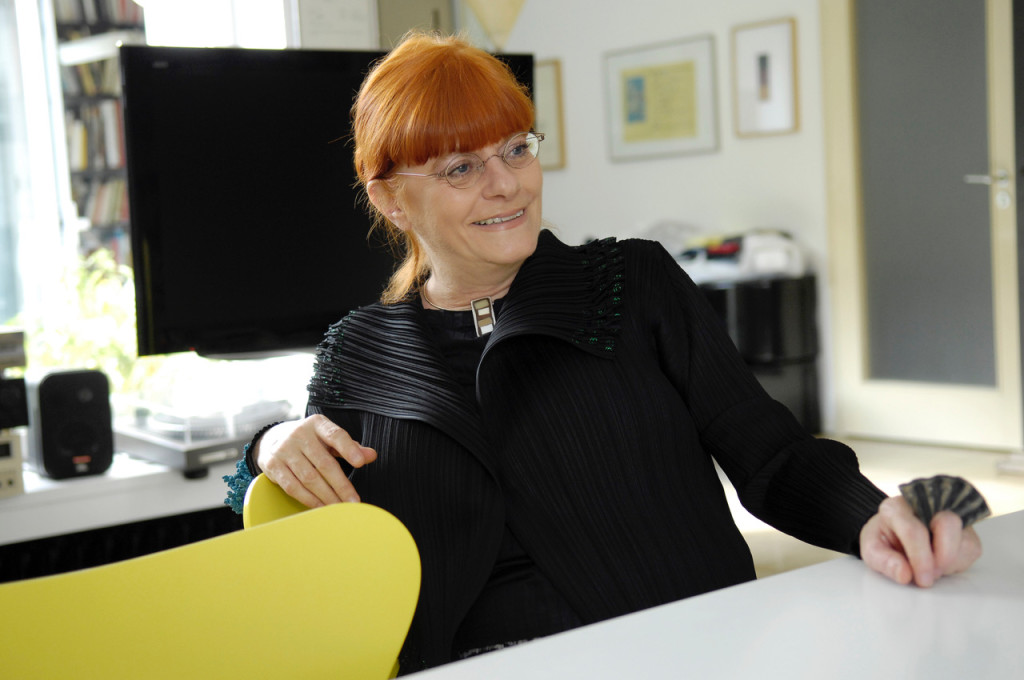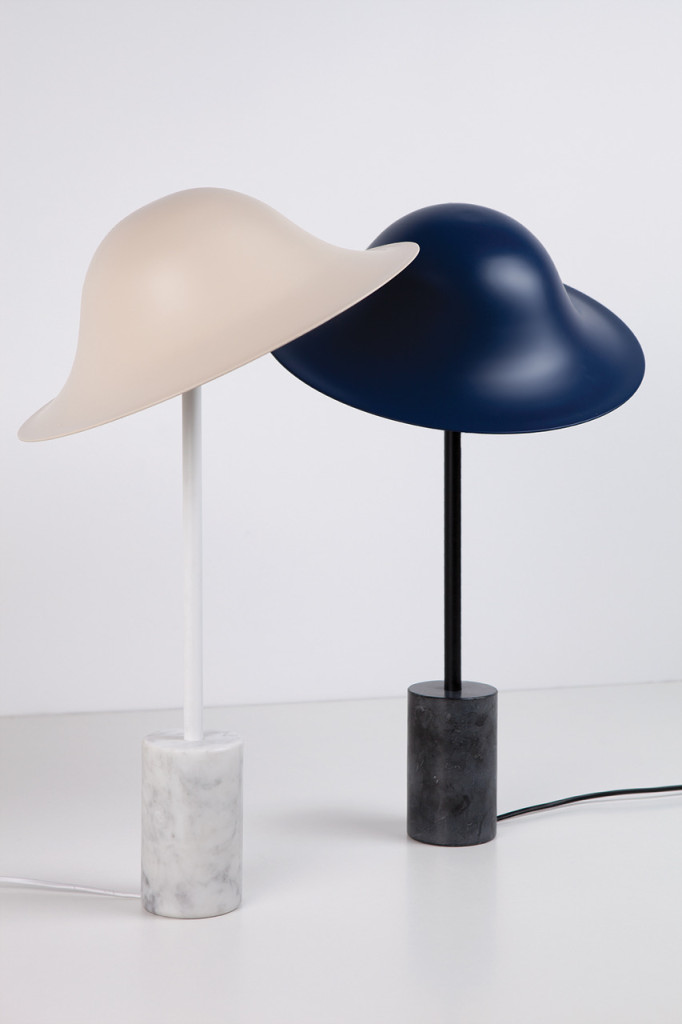Women in design are still underrepresented. We talked to the designers, design theorists and brand experts Katja Lis, Uta Brandes, Joa Herrenknecht and Katrin Menne about the reasons for this, what can be done to change it and whether female design exists at all.
By Martina Metzner
When you think of design personalities, you quickly think of male names – Konstantin Grcic or Dieter Rams, for example. Women are far more rarely represented – those with an international reputation can almost be counted on one hand – Patrica Urquiola or Inga Sempé, for example – if they do not work together with a man. Women in design are still underrepresented. But things are moving. Since the #MeToo debate gave a boost to the new women’s movement in 2017, the question of gender and diversity has been heavily discussed. It is about topics such as female self-determination, cooperation instead of competition, female entrepreneurship, women as role models, female participation or gender-specific bias. This is also reflected in design in many ways: for example, new women’s networks have been founded – such as the “Women of DDC” of the German Designer Club or Ladies, Wine & Design by the US graphic designer Jessica Walsh. Another milestone is the exhibition “Here we are! Women in Design 1900 – today” at the Vitra Design Museum in 2021, which is now being extended at the Gewerbemuseum Winterthur. Reason enough to talk to opinion-leading female designers, design theorists and brand experts on the subject of “Women in Design”. The author asked them why female designers are still less visible than their male colleagues, what can be done to be successful and how and if at all design by and for women differs from that by and for men?
Networking of Women in Design for More Equality

For Katja Lis, co-owner of the agency dbf designbüro frankfurt, it is important to bring women forward in design. Lis noticed in her studies that women perform particularly well, but disappear from the scene after graduation. In her opinion, this is partly due to the general conditions, such as flexible working models, but also to asserting oneself in the working world. The 5-point plan Lis developed gives advice on how to make the management level in one’s own company more diverse. This is about active promotion, creating awareness, framework conditions, quota and simply doing it. In order to make an impact, the communication design graduate is involved with lectures and workshops and serves as an advisory board member for diversity in the DDC and the German Design Day. In 2018, she founded the Women of DDC platform with other female DDC members. The goal: to make female designers more visible, to promote and network with each other and to learn from each other across generations. She emphasises the particularly positive aspect of working together with women. This happens “at eye level, everyone is allowed to talk and at the same time you challenge each other.”
Genderfluid Instead of Gendermarketing

Anyone who talks about gender design cannot avoid Uta Brandes. The design theorist was professor for gender and design and for design research at the Cologne International School of Design from 1995 to 2015. Brandes is also co-founder of the International Gender Design Network and chair of iGDN Germany, which promotes feminine and non-binary perspectives in design. She was also actively involved in the founding of the Designerinnen Forum. Together with her late partner Michael Erlhoff, she initiated the iphiGenia Gender Design Award in 2017, of which she is a jury member. Her book “Gender Design” has become a classic. In Brande’s opinion, the fact that women are apparently underrepresented in design is due to the attribution to binary genders: “Everything that concerns high-tech, technology and so on is automatically attributed to men.” And further: “Everything that concerns decoration, house, cosiness, that is then the women’s domain.”
According to Brandes, these attributions persisted. And so men automatically occupied the more conspicuous and market-dominating genres. She cites automotive design as an example, where female designers appeared at most for colour & trim. “A woman has never actually designed a rim,” says Brandes. But she has hope. The new generation is very interested in gender issues, she says, as well as non-binary genders. She also sees movement among companies. Shallow gender marketing is becoming less and less common. As in all areas of social life, diversity and mixture are always the most exciting – both in terms of the people as design professionals and the designs, says Brandes. In her opinion, a design should emerge that is so open that everyone can personalise it, that it adapts to the respective needs, spatial situation and social situation, making it more universally usable. Brandes calls it “genderfluid design”.

Where are the women in furniture design?
Joa Herrenknecht and ten other designers from Berlin founded the collective “Matter of Course” 2021 during the Corona pandemic with the aim of exchanging ideas and creating joint projects and exhibitions. They are currently exhibiting together at Kant Garagen in Berlin. Each of them is independent, the most diverse design disciplines are represented, such as furniture, textile or porcelain design. Herrenknecht herself is a furniture designer and has been working from her own studio in Berlin since 2012 for international companies such as Bolia, Ambivalenz and Design Within Reach. In order to assert herself as a woman in the design business and to get role models, she worked as an assistant for Patricia Urquiola in Milan. According to Herrenknecht, women are not as visible in furniture and industrial design as they are in textile or porcelain design. From her studies, she says, only a few female designers are still self-employed, although the distribution in the studies was 50/50. She observes that many industrial companies are run by men and that they also cooperate more with men. Only a few German companies look at diversity. She also addresses the topic of children – as a self-employed designer and mother of young children, it is important to focus, network and remain agile. She finds it positive that in the history of design, more attention is now being paid to women and long-forgotten female designers are becoming public. Do women and men design differently? “Maybe subconsciously,” says Herrenknecht. “Women design a little more colourfully.” After all, she says, the object should stand for itself, whether it was designed by a woman or a man. She herself likes to work with metal – a material that tends to be attributed to men.

“The Male Creative Genius”
Katrin Menne knows about women in leadership positions. Menne has been Head of Brand and Research at Commerzbank since 2021. Before that, the design graduate was responsible for global brand management at Merck. The reasons why she is in this position are as follows: “I’ve always thrown myself into it, achieved very good results and have a husband with whom I share the family work.” Last but not least, she was lucky to have come across good framework conditions and superiors who encouraged her. “From my side, however, I have also always kept commitments I have made. The fact that women are still underrepresented in design is due to the still patriarchal social structures that do not stop at design. She cites “the idea of a male creative genius”, “ownership and power structures that influence the awarding of contracts” and even “the writing of history”. Katrin Menne not only believes that mixed teams are more successful, but also refers to McKinsey’s diversity study from 2020, which proves this statistically. The fact that nowadays more attention is generally paid to gender balance would of course also benefit design. According to Menne, the younger generation of women and designers in particular are now marketing themselves confidently and professionally in social media. Her tip to women who want to make a career: “Take opportunities when they arise – even if the shoe seems too big, trust that you’ll grow into it.” Then “take the opportunity to be public, talk about your successes.” And if you are successful, also look at how you can support other women.
For more visibility of women in design, all the women interviewed suggest: “networking, networking, networking.” To the question of whether there is “female design”, almost all women answered in unison. As a result, all respondents would like to see a design that is completely free of clichés and attributions. Universal” and “genderfluid design” are often mentioned. Gender marketing with female and male attributions still exists – such as “pink and glitter” for women, and the sportier model in “blue and black” for men – but is becoming less and less common. On the question of “feminine material”, too, they all answer with “associations” that have been developed from cultural history and are read in this way, but are not immanent. “Round and soft” are more feminine-sounding materials, while “hard and angular” are more attributed to the male hemisphere. However, some qualify that design can be influenced by a female perspective, even if tools and methods are the same. All confirm that the overall awareness of gender and diversity has improved in recent years.
More on ndion
More articles on Design and Gender.
Share this page on social media:

